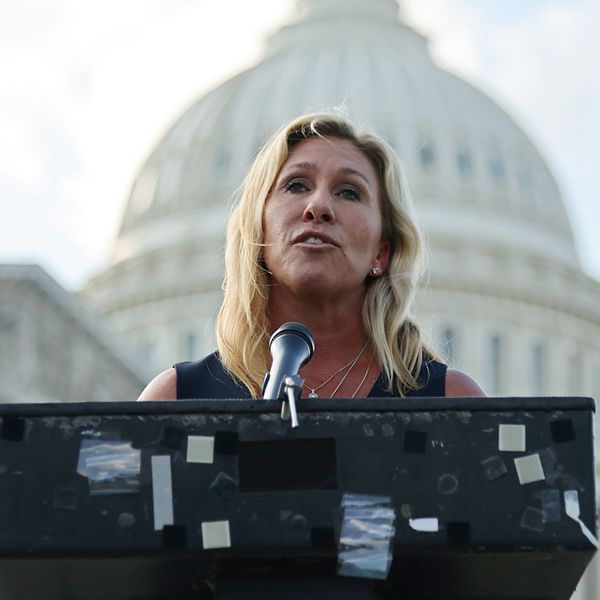Year after year, the numbers continue to rise. Now, one percent of the world’s population, more than 80 million people, have been forcibly displaced from their homes. That is a huge number. Often when we see numbers like that it is easy for people to forget that those are individuals, families, and children who are displaced. Each one of these people have their own story and life that they left behind when they were forced to flee their homes.
In the last decade, the total displaced population has doubled. Two of the main drivers of this displacement have been the rise of violent conflicts and mass atrocities. But that is only half of the story. Not only are we seeing an increase of violent conflicts and atrocities but also of protracted conflicts that drag on for years. As the UN High Commissioner for Refugees put it, “The world has clearly shifted from a decade of solutions to a decade of new and protracted displacement.”
It’s pretty simple. Protracted conflicts inevitably cause protracted displacement. Refugees and internally displaced people cannot return home if there is no home to return to or if the original threats that forced them to flee are still present. And this isn’t a small problem. By the end of 2019, 77 percent of all refugees were in a protracted displacement situation.
While there are many examples of intrastate conflicts that have led to mass displacement, interstate conflicts have played a role as well. And unfortunately, U.S.-led wars and military actions have directly caused mass displacement and significantly exacerbated the protracted nature of intrastate violence.
According to researchers at Brown University’s Costs of War Project, at least 37 million people have been forcibly displaced from their homes due to the United States’ “global war on terror.” In some cases, the United States’ direct actions have led to mass displacement, as with the wars in Afghanistan and Iraq. Afghanistan remains one of the top refugee-producing countries as a result of protracted conflict. There are still 2.7 million refugees who have fled their homes in Afghanistan and have not been able to return.
Secondary effects of the war on terror have also played a significant role in displacement. The invasion of Iraq, and some disastrous policy decisions thereafter, had a trickle-down effect that led to more instability and displacement in the region. One of the many criticisms about the invasion of Iraq is the blowback that spawned various militia groups including ISIS (Islamic State of Iraq and Syria).
March 15, 2021 marked 10 years since the start of the civil war in Syria. The civil war began as part of the Arab Spring uprisings with the Syrian people pushing back against repressive leadership for decades. While ISIS is not responsible for the start of the civil war, and Bashar al-Assad is to blame for most of the death, destruction, and displacement of Syrians, ISIS has played a significant role there as well. The violence and atrocities ISIS and Al-Qaeda affiliates carried out in the region further intensified the crisis and was an additional driver of displacement.
Today, more than 6.6 million Syrians are living as refugees, more than 2.5 million of whom are children under the age of 18. A ten-year-old Syrian refugee has lived her or his entire life outside of their home country, most likely in an under-funded refugee camp.
Protracted refugee situations like that of Afghanistan or Syria have been shown to last for more than 20 years on average. Millions of children will spend most of their lives living in a refugee camp. Food insecurity, limited education, and trauma can all play a role in limiting a child’s development.
We cannot afford to lose generations of children to protracted refugee crises. We cannot allow rising global displacement to become normalized.
What can be done
The only way to stop mass displacement is to address the drivers of displacement. Increasingly, the main driver is violent conflict. The international community must prioritize the prevention of violent conflict and mass atrocities if there is any hope at tackling the global displacement crisis. This does not mean engaging in last-minute, ad hoc efforts to stop the outbreak of violence when a country is already at the brink of civil war. It also does not mean endless kinetic operations in the name of counter-terrorism or countering violent extremism.
True prevention requires long-term sustained investments that address the deep-seated and root causes of violence and instability. It also means working toward some form of a representative government where people’s basic human needs are met and human security is prioritized.
For ongoing conflicts, more must be done to get to a durable peace. This does not mean temporarily placating armed actors. Band-aid solutions never last and often can exacerbate conflict dynamics leading to an even longer cycle of violence.
The United States and the international community must get creative with its solutions to these conflicts. It is long past time that we recognize that leaders and armed actors who are willing to commit mass atrocities against their own people are not going to be good-faith actors in a peace negotiation. Nor will they be the solution to the problem that they started. Hand-wringing over the fact that someone like Bashar al-Assad in Syria is not negotiating in good faith or that a leader like Salva Kiir in South Sudan is not addressing the plethora of problems facing the South Sudanese people is pointless.
Until these protracted crises can be resolved, refugees need a home. In the United States, we have seen the resettlement of refugees plummet over the last four years. The Trump administration set the refugee admittance cap at historic lows. Last year the ceiling was set at only 15,000 refugees — a fraction of the number that prevailed under the Obama administration —with the actual number of admitted refugees likely falling below that number.
That is why it was a welcome announcement that the Biden administration planned to increase the 2021 ceiling to 62,500 refugees and eventually to increase it to as high as 125,000 in 2022. However, since the president’s announcement last month, no official changes to the refugee ceiling have been made. Earlier this month, CNN reported that hundreds of refugees who were approved to be resettled in the United States were turned away at the last minute. Some refugees had their flights unbooked and others had their trips postponed. It is time for President Biden to make good on his word and officially increase the number of refugees the United States will welcome.
Beyond that, President Biden can and should prioritize developing new approaches to dealing with protracted crises. An interagency task force should be created to review past methods and develop recommendations for new approaches to protracted crises. This task force should have a clear and concise mission with specific deliverables and should not continue operating in perpetuity.
Prioritizing the prevention of violent conflict and developing new solutions are the only ways to effectively address the global displacement crisis and ensure that it does not become the new normal.















